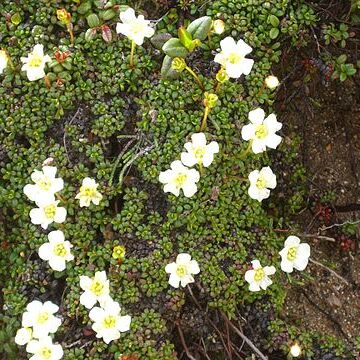Shrublets or perennial herbs, prostrate or decumbent, evergreen, mostly glabrous. Stipules absent. Leaves simple, spirally arranged or alternate, often crowded, subsessile or petiolate, pinnately veined. Flowers bisexual, actinomorphic, solitary or in a capitate raceme. Calyx 5-lobed, persistent; lobes free, imbricate. Corolla basally connate, apically lobed, caducous; lobes 5, spreading. Stamens 5[or 10], epipetalous, alternate with corolla lobes if 5; staminodes 5 if present, epipetalous, opposite corolla lobes, scalelike or spatulate; anthers 1-or 2-celled, dehiscing by slits. Ovary superior, 3[or 5]-locular; ovules numerous, axile, anatropous or amphitropous. Style simple; stigma lobed, capitate, or disciform. Fruit a 3[or 5]-locular capsule, loculicidally dehiscing. Seeds many, small, cylindrical; endosperm copious; embryo straight or slightly curved.

